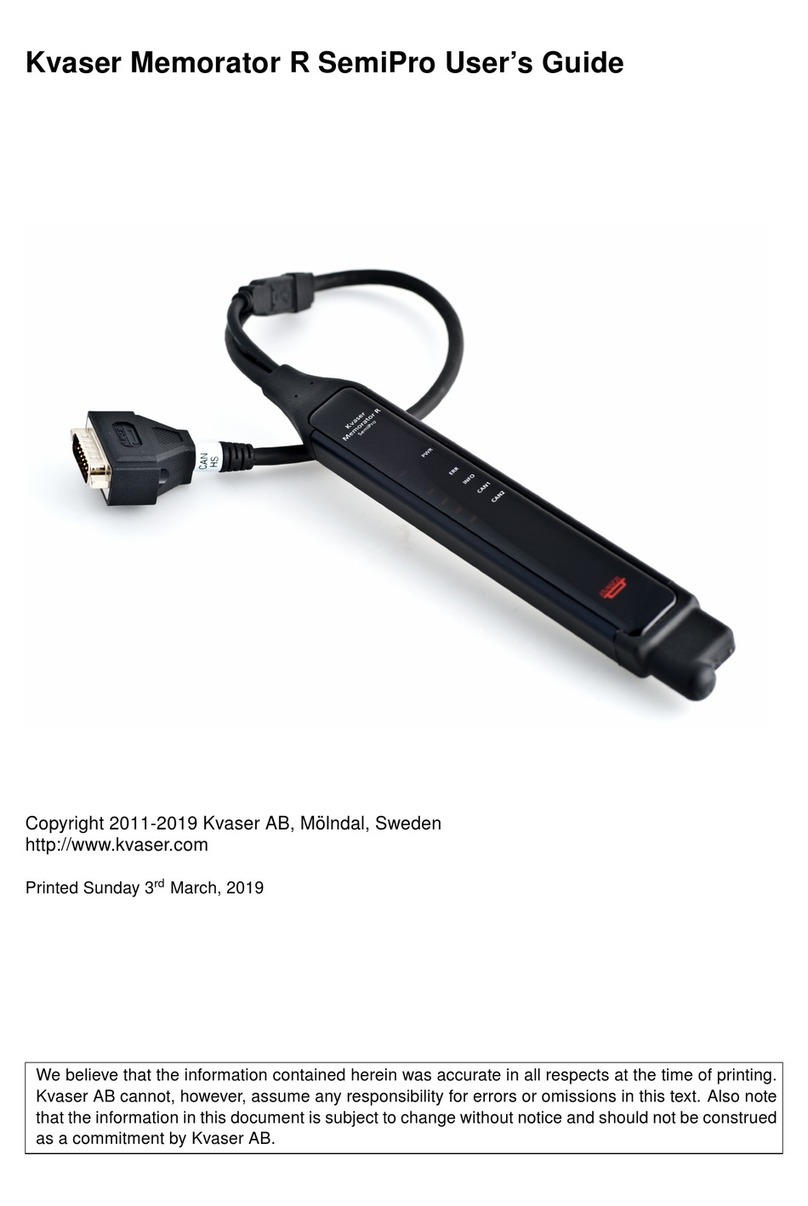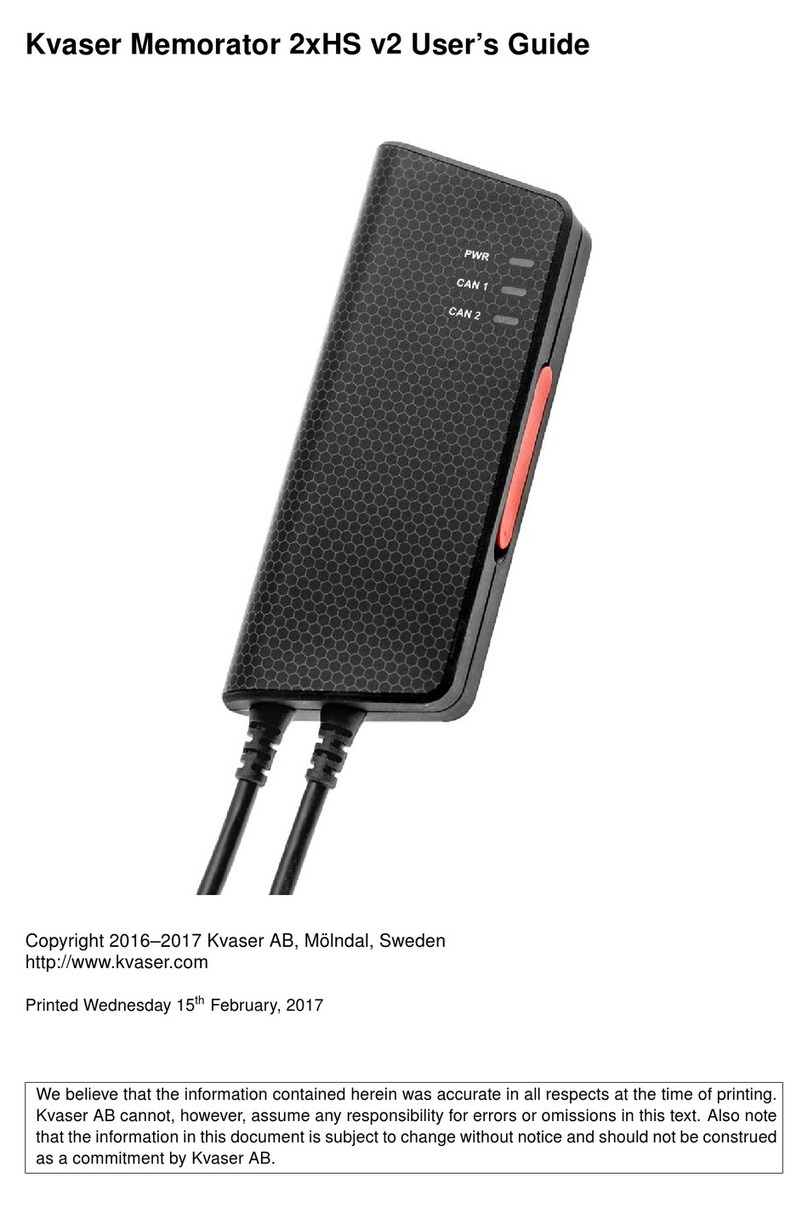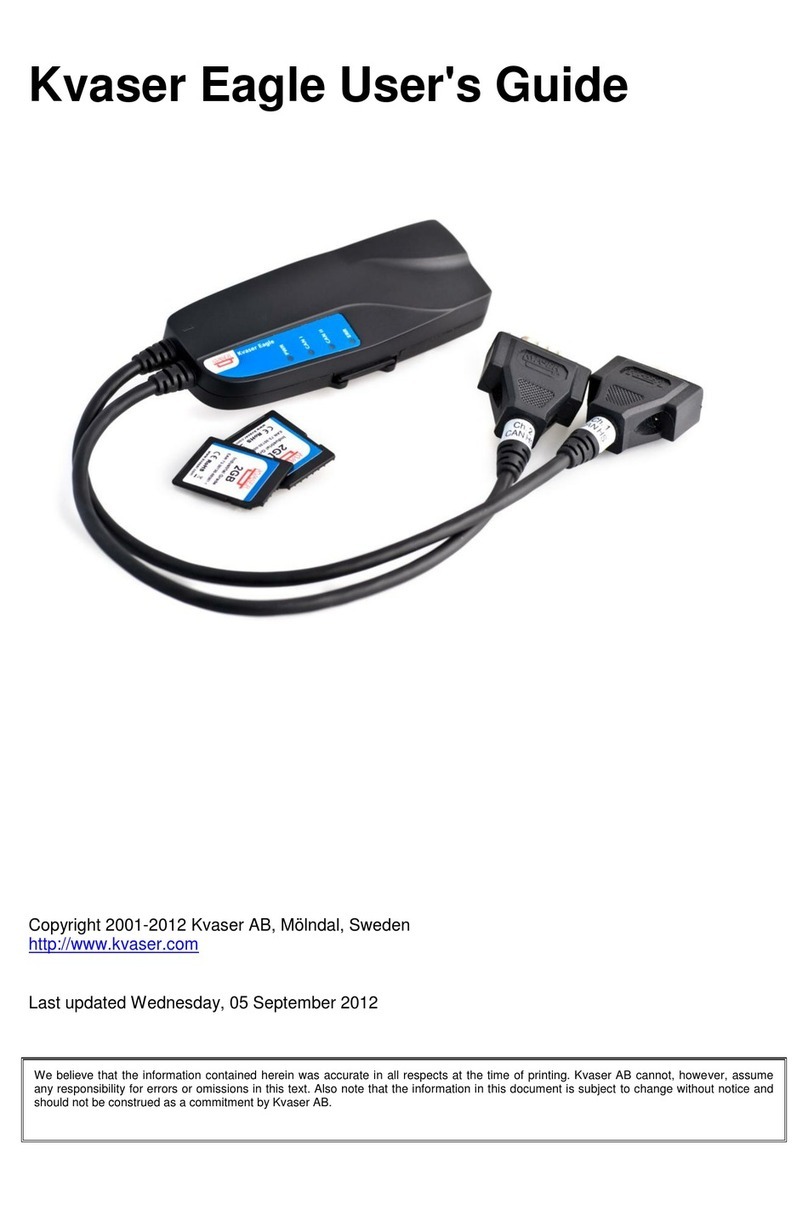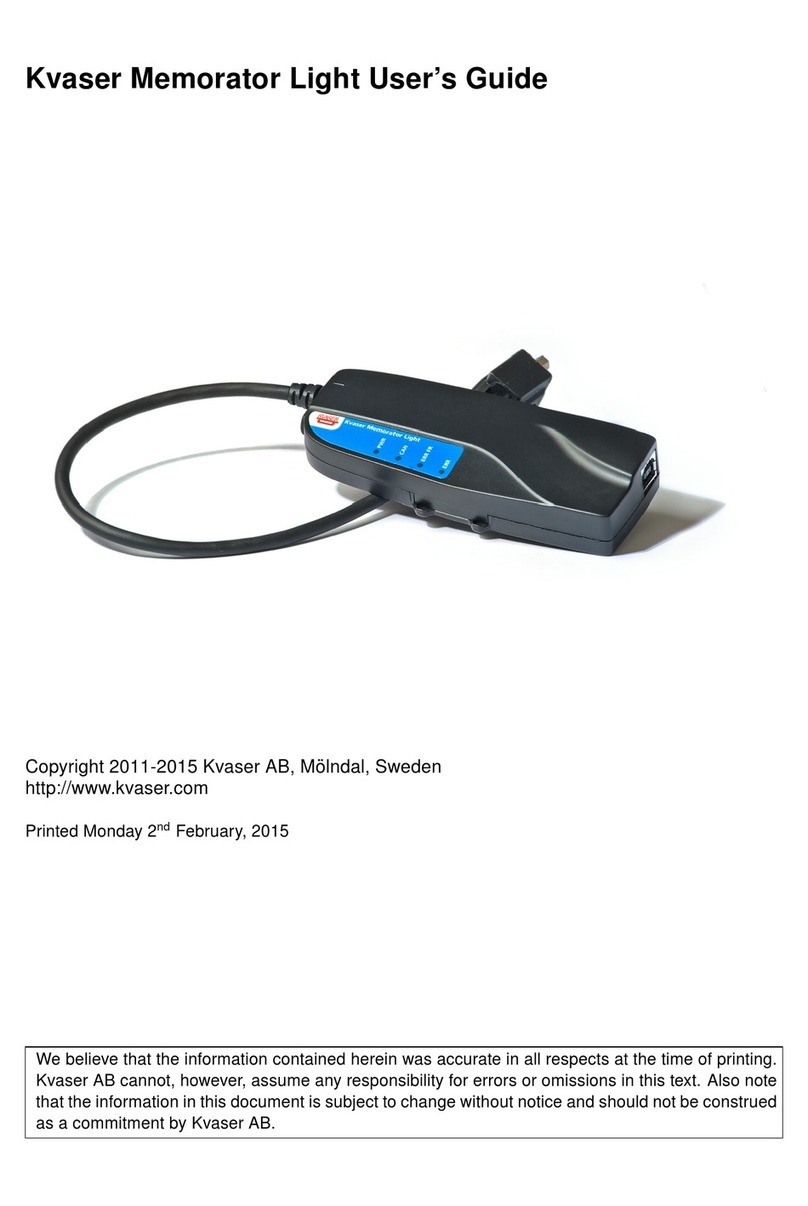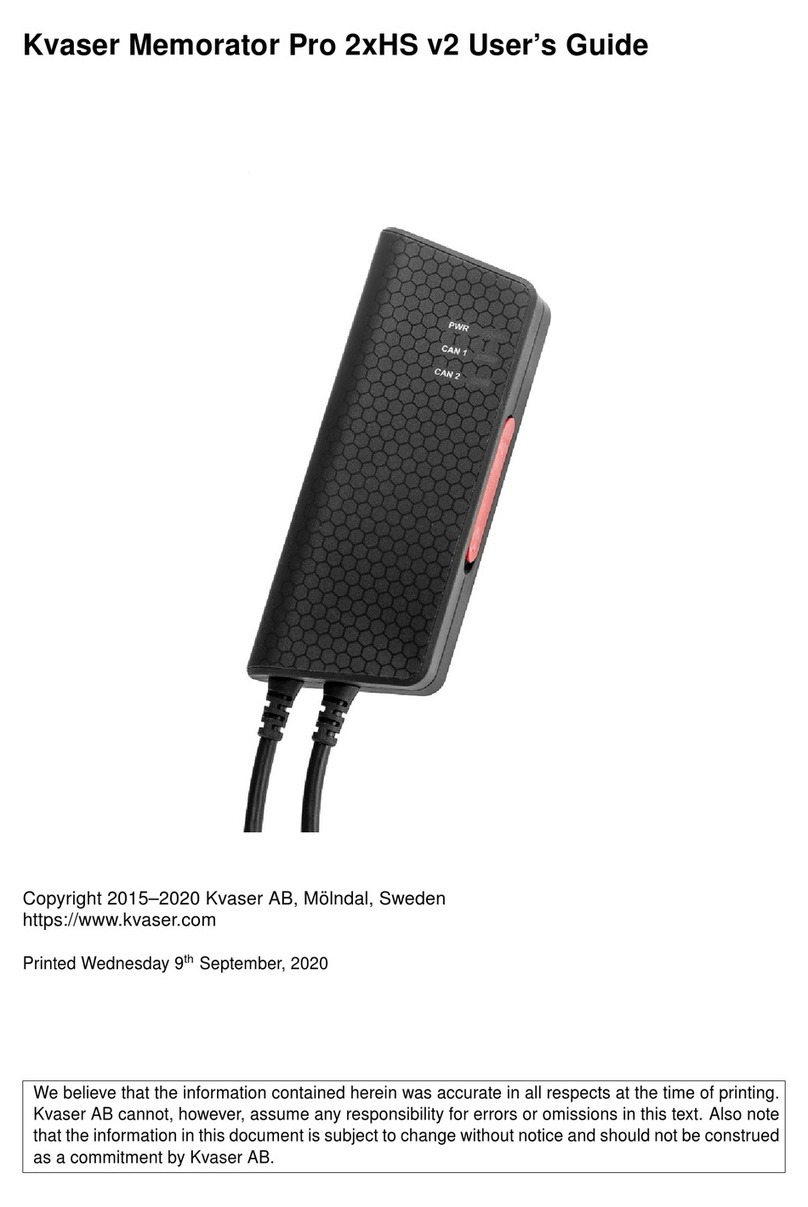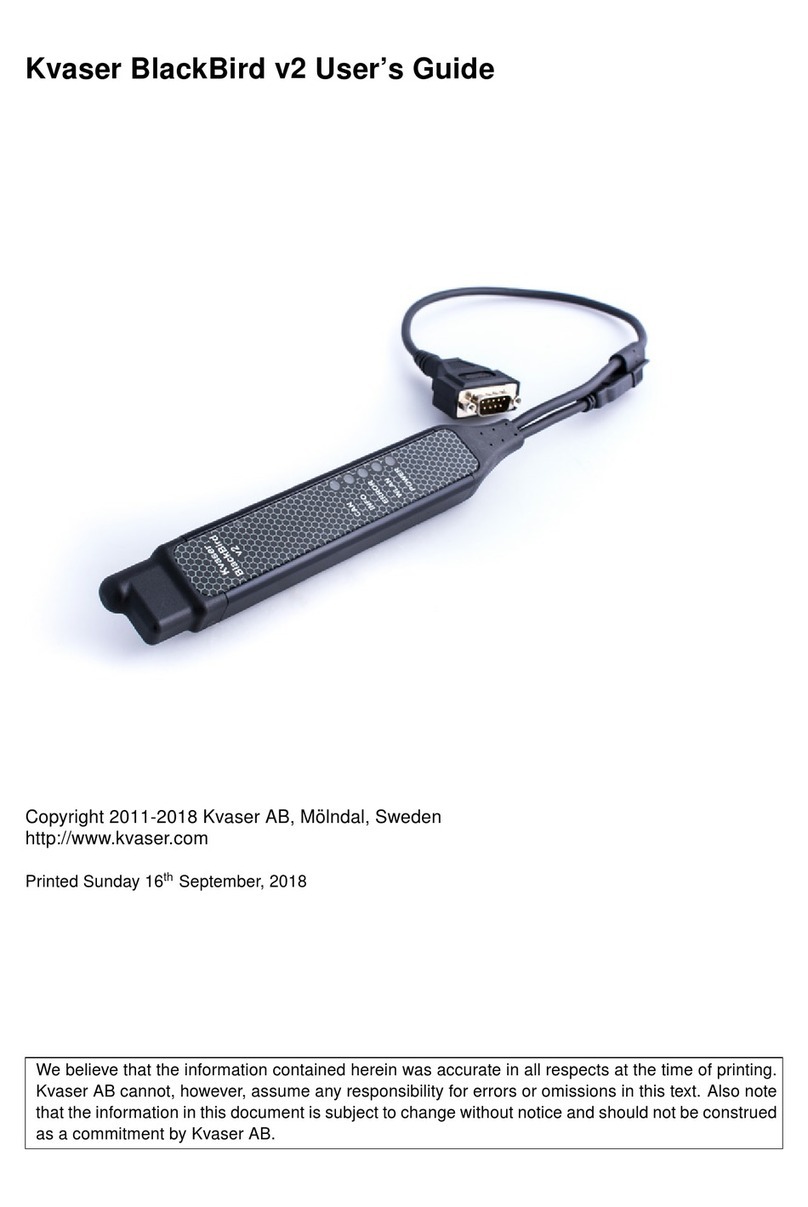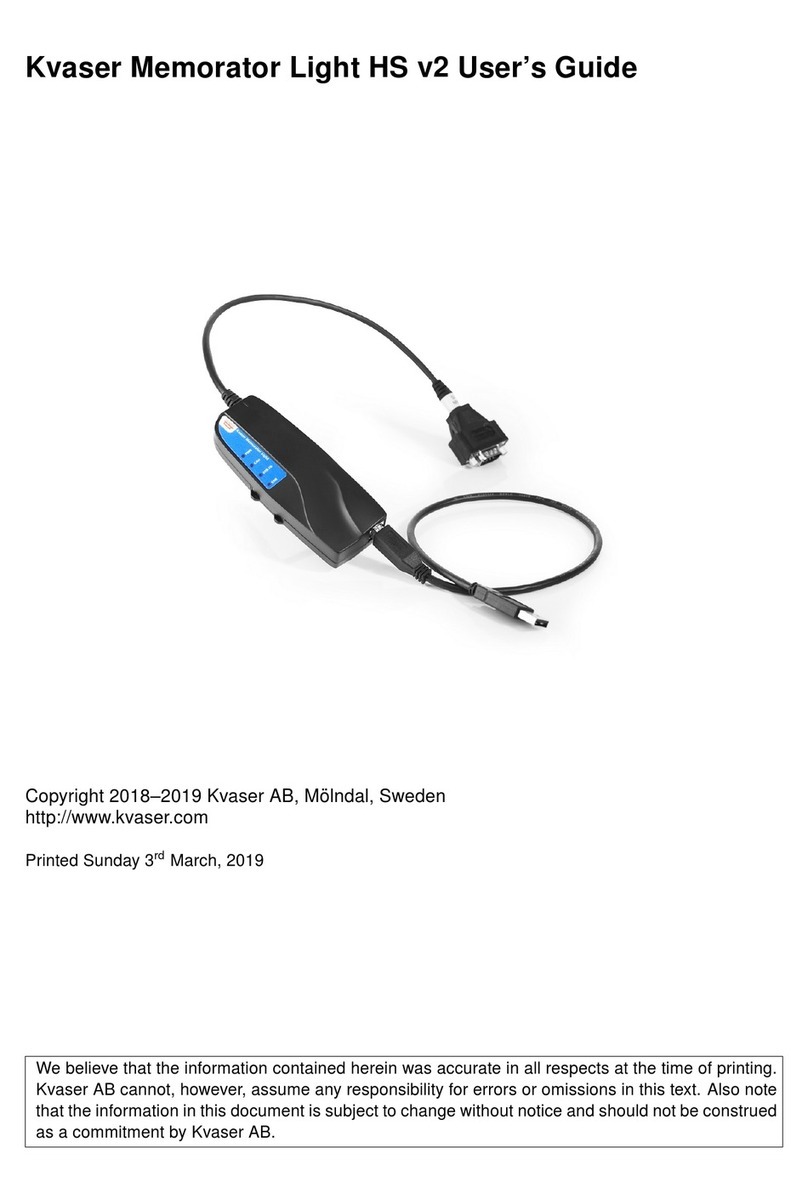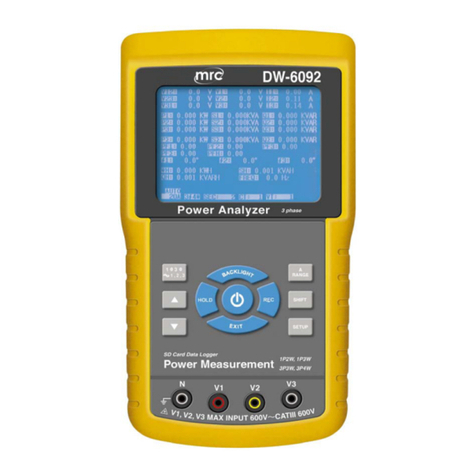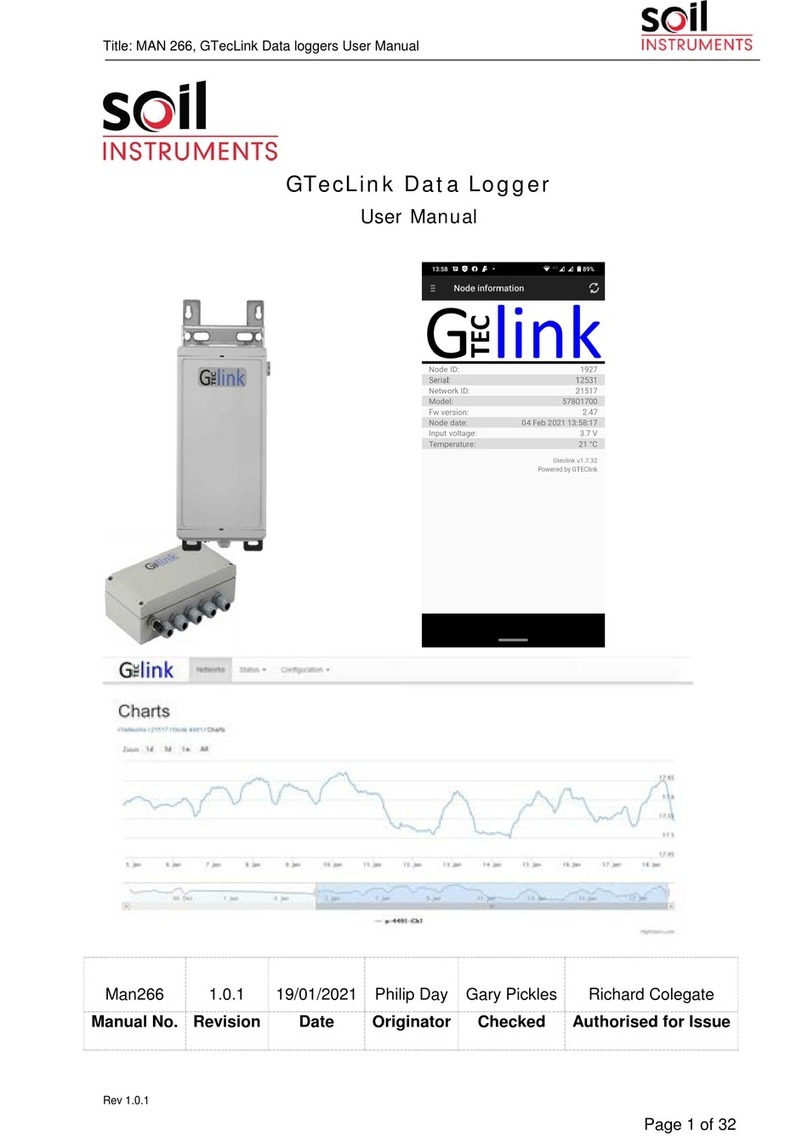
Kvaser Memorator R SemiPro User's Guide 4(31)
Kvaser AB, Mölndal, Sweden —www.kvaser.com
1 Table of Contents
Kvaser Memorator R SemiPro User's Guide..........................................................................1
1Table of Contents..............................................................................................................4
2About this manual .............................................................................................................5
3Introduction........................................................................................................................6
3.1 Welcome to Kvaser Memorator R SemiPro.................................................................6
3.2 Major features of Kvaser Memorator R SemiPro.........................................................7
3.3 CAN logger Functions..................................................................................................7
3.4 Real time CAN-USB interface......................................................................................8
3.5 Kvaser Memorator Tools..............................................................................................8
3.6 Additional software and documentation.......................................................................8
4Kvaser Memorator R SemiPro Hardware........................................................................9
4.1 Hardware installation....................................................................................................9
4.2 USB connector.............................................................................................................9
4.3 CAN channels ..............................................................................................................9
4.4 Power supply............................................................................................................. 10
4.5 Flash disk.................................................................................................................. 10
4.6 LED indicators........................................................................................................... 10
4.7 External trigger input................................................................................................. 14
4.8 External trigger output............................................................................................... 15
5How to use the Kvaser Memorator R SemiPro............................................................ 17
5.1 Use as a CAN interface............................................................................................. 17
5.2 Configure for logging................................................................................................. 17
5.3 Use as a logger......................................................................................................... 17
5.4 Kvaser Memorator Tools........................................................................................... 17
5.5 Troubleshooting ........................................................................................................ 18
6Appendices ..................................................................................................................... 19
6.1 System requirements ................................................................................................ 19
6.2 Technical data........................................................................................................... 19
6.3 Performance.............................................................................................................. 21
6.4 Disk capacity............................................................................................................. 21
6.5 CAN connectors........................................................................................................ 21
6.6 Updating the firmware............................................................................................... 24
6.7 Required software versions....................................................................................... 25
6.8 CAN bus termination................................................................................................. 25
6.9 CAN bus overrun....................................................................................................... 26
6.10 Daisy-chaining several interfaces.......................................................................... 26
7Frequently Asked Questions......................................................................................... 27
8Disposal and Recycling Information............................................................................ 28
9Legal acknowledgements.............................................................................................. 29
9.1 Usage warning .......................................................................................................... 29
9.2 EMC compliance statement...................................................................................... 30
9.3 RoHS compliance statement..................................................................................... 30
9.4 Patents, copyrights and trademarks ......................................................................... 30
10 Document revision history ........................................................................................ 31
